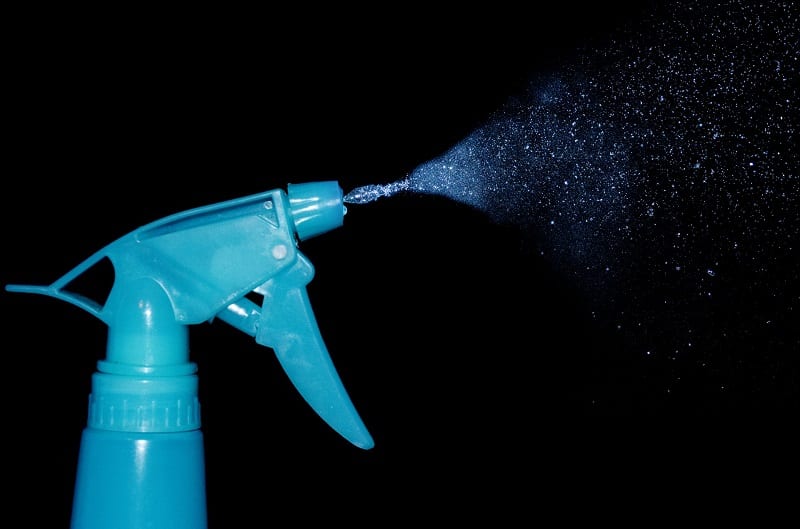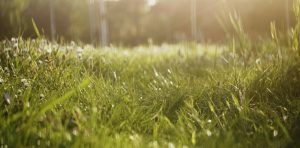Last Updated on November 24, 2023 by teamobn

Did you know that hydrogen peroxide has important uses in your garden? You probably have some hydrogen peroxide in your medicine cabinet for minor cuts, but you can use it to control pests and boost plant growth, as well.
This seemingly commonplace household item transcends its conventional use, emerging as a potent tool for gardeners seeking natural and effective solutions.
Its seamless transition from its conventional role to a pivotal agent in nurturing plant life highlights the inherent resourcefulness latent in the simplest of household items. What was once perceived as a remedy solely for personal health and well-being has, with innovation and experimentation, revealed a broader spectrum of utility.

The extra oxygen (H2O2) gives its beneficial properties.
Your Garden’s Best Mate
Contents
In fact, you can use it to boost plant growth and treat root rot, among others. You can also use it as a pesticide and a foliar spray to kill fungus.
The trick lies in diluting its potency. You can purchase it in various potencies. The most commonly available is a 3 percent solution, but it is also available in a 35 percent solution.

The Wonders of Hydrogen Peroxide
Step into the lush realm of gardening, where the magic of cultivation meets the science of care. Amidst the tools and techniques, there’s a silent ally that has been gaining recognition for its remarkable contributions to vibrant gardens – hydrogen peroxide.
In this exploration, embark on a journey through the green corridors of horticulture to unravel the multifaceted benefits it brings to your cherished garden space. From nurturing soil health to fostering robust plant growth, this unassuming solution reveals its prowess in fostering a thriving, resilient garden.
1. Boosting Plant Growth
- It helps encourage healthy root growth because of the extra oxygen molecule. To give plants that added boost of oxygen, add 1 teaspoon of 3 percent solution into a cup of water.
- Pour the mixture into a spray bottle and use it to mist plants.

2. Treating Root Rot
- To treat root rot, mix one part of additive-free 35 percent hydrogen peroxide with ten parts water.
- Water plants very thoroughly using the mixture, then allow the soil to dry. The top 2 to 3 inches of soil should be completely dry before returning to a regular water regimen.
- If you follow the above steps correctly, you’ll find that you can treat root rot with only one watering of peroxide.

3. Eliminating Pests
- Mix equal parts 3 percent hydrogen peroxide and distilled water.
- Use a spray bottle to soak the infected plants. Make sure to get the undersides of the leaves.
- Spray once a week. The solution will both treat and further prevent pest infestation.

4. Fighting Fungal Infections
- Mix 4 tablespoons of 3 percent hydrogen peroxide with a pint of water in a spray bottle.
- Apply the mixture to the leaves and root structures of plants displaying indications of fungal infections.

Precautionary Tips for Hydrogen Peroxide Use
- Dilution Ratio:
- Dilute hydrogen peroxide to the recommended concentration, often a 3% solution, to avoid potential harm to plants and soil organisms.
- Protective Gear:
- Ensure your safety by donning suitable protective gear, which includes wearing gloves to shield your skin and safety goggles to protect your eyes, when handling the substance. This precautionary measure aims to prevent potential skin irritation and eye contact, providing a secure environment for your handling activities.
- Storage:
- Optimal storage conditions involve placing the substance in a cool and dark environment, keeping it shielded from direct sunlight and excessive heat.
- Avoid Mixing:
- Do not mix with other chemicals unless specified. Mixing can lead to unexpected reactions and produce harmful substances.
- Read Labels:
- Carefully read and follow the instructions on the product label. This includes information on dilution ratios, application methods, and any safety precautions provided by the manufacturer.
- Targeted Application:
- Apply hydrogen peroxide directly to the specific areas or plants that require treatment. Avoid unnecessary application to non-targeted areas to minimize potential harm.
- Timing of Application:
- Apply hydrogen peroxide during the early morning or late afternoon to maximize its effectiveness. This also reduces the risk of evaporation in intense sunlight.
- Patch Testing:
- Before widespread application, conduct a small-scale test in an inconspicuous area of your garden to observe how plants react to the hydrogen peroxide solution.
- Monitor Plant Health:
- Regularly monitor plants after applying hydrogen peroxide. If you notice any adverse effects, such as leaf discolouration or stress, adjust your application methods accordingly.
- Keep Away from Children and Pets:
- Store hydrogen peroxide out of reach of children and pets. Accidental ingestion or contact can be harmful.
- Rinse Foliage:
- If hydrogen peroxide comes into contact with plant foliage, consider rinsing the leaves with water to minimize the risk of potential damage.
- Use Moderation:
- Apply hydrogen peroxide judiciously. Excessive use can disrupt the balance of beneficial microorganisms in the soil and may harm plant health.
Following these precautionary measures will help ensure the safe and effective use of hydrogen peroxide in your garden. Always prioritize safety and environmental considerations when incorporating any substance into your gardening practices.
The Wrap Up
Hydrogen peroxide can be your garden’s best mate. Your garden can greatly benefit from treatments. Even better, it is compatible with organic gardens.
Witness the seemingly ordinary morph into a horticultural powerhouse, unveiling its prowess in nurturing a garden paradise. From fending off pests to nurturing a tapestry of lush foliage, this journey transcends conventional gardening wisdom. Immerse yourself in the alchemy of botanical brilliance, where the secrets come alive, transforming your garden into a lush oasis of vibrancy and vitality.
Are you ready to embark on a magical journey where your garden thrives like never before?








